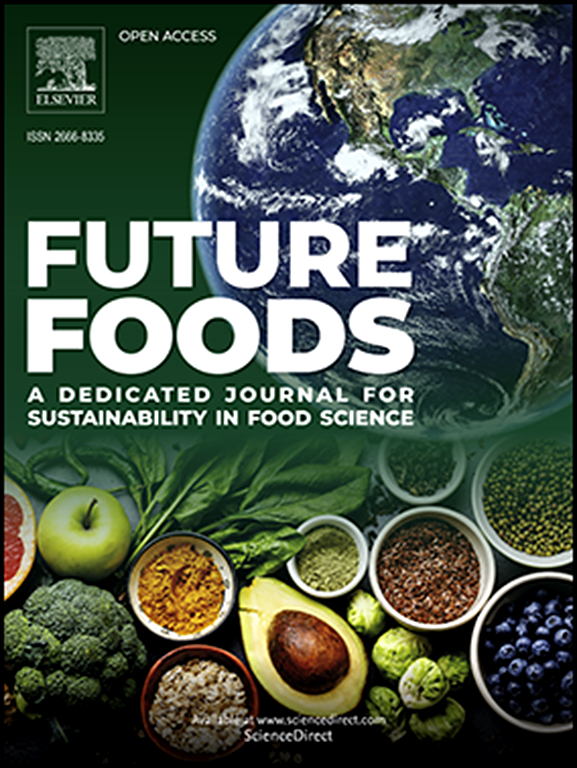Mutagenesis treatment of Mortierella alpina for PUFA production enhancement for future food development
IF 7.2
Q1 FOOD SCIENCE & TECHNOLOGY
引用次数: 0
Abstract
Random mutagenesis has been identified as a key tool for improving microbial and fungal strains enabling the development of isolates with improved traits suited for industrial scale metabolite production to enhance the nutritional value of future foods. Presented here, is a random mutagenesis strategy employed to assess the effect of 5-fluorouracil (20-200 µg/ml), alone and in combination with the secondary agents octyl gallate and nocodazole, and diethyl sulfate (0.1 to 1 %) chemical mutagenic agents, on the biomass and lipid production as well as the FAME profile. Interestingly, a correlation was demonstrated between 5-fluorouracil exposure time and the arachidonic acid content, which was also influenced by the concentration used. 5-fluororuracil of 100 µg/ml treatment for 48 h resulted in the highest arachidonic acid (% TFA) content in isolates. Mutant M5F047 isolated with 5-fluororuracil (100 µg/ml) alone, proved to be most superior in terms of polyunsaturated fatty acid (PUFA) and arachidonic acid production, as compared to the Mortierella alpina wild type strain, with enhancements that doubled that of the parent strain. These improvements are more favorable for industrial scale production of arachidonic acid, a precursor of meaty flavour to improve plant-based meats in future food development.
求助全文
约1分钟内获得全文
求助全文
来源期刊

Future Foods
Agricultural and Biological Sciences-Food Science
CiteScore
8.60
自引率
0.00%
发文量
97
审稿时长
15 weeks
期刊介绍:
Future Foods is a specialized journal that is dedicated to tackling the challenges posed by climate change and the need for sustainability in the realm of food production. The journal recognizes the imperative to transform current food manufacturing and consumption practices to meet the dietary needs of a burgeoning global population while simultaneously curbing environmental degradation.
The mission of Future Foods is to disseminate research that aligns with the goal of fostering the development of innovative technologies and alternative food sources to establish more sustainable food systems. The journal is committed to publishing high-quality, peer-reviewed articles that contribute to the advancement of sustainable food practices.
Abstracting and indexing:
Scopus
Directory of Open Access Journals (DOAJ)
Emerging Sources Citation Index (ESCI)
SCImago Journal Rank (SJR)
SNIP
 求助内容:
求助内容: 应助结果提醒方式:
应助结果提醒方式:


